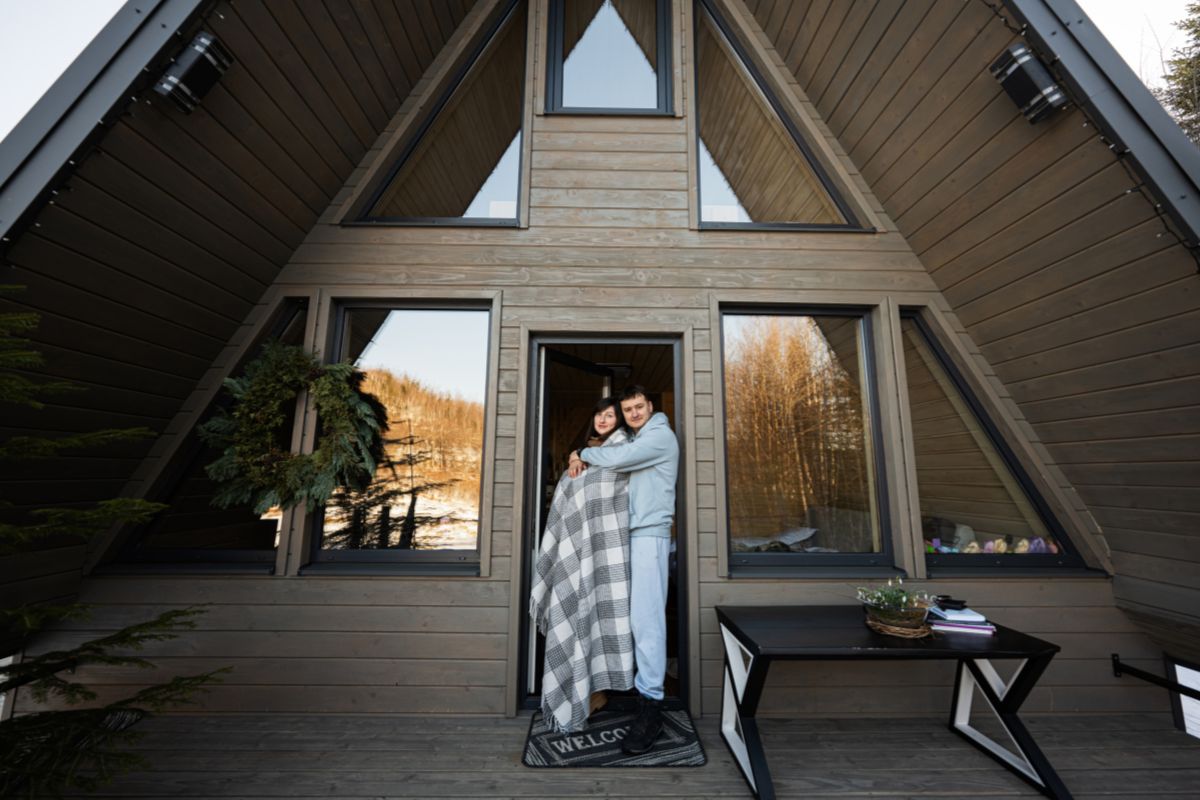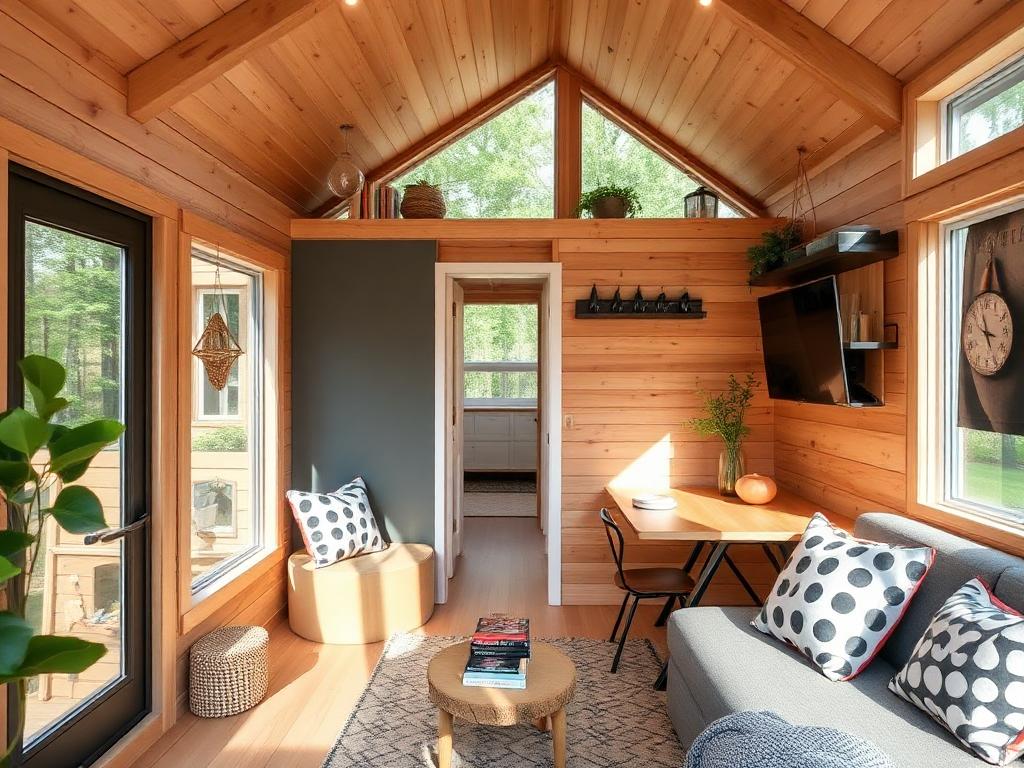What are the secrets to creating a home that's both functional and cozy? Stick around as we explore the art of tiny living, offering practical advice and innovative ideas that will transform your tiny house into a big success.
Understanding the Tiny House Movement
You might be wondering, what's the Tiny House Movement all about? Well, it's a social and architectural trend that promotes living simply in small spaces. The idea is to downsize your living space, live more efficiently, and reduce your environmental footprint.
The Tiny House Movement started gaining traction in the early 2000s, as a response to the financial crisis and the growing concern for the environment. It's not just about living in a smaller space, it's about redesigning your lifestyle altogether. You're decluttering your life, prioritizing what's truly important, and freeing yourself from the shackles of material possessions.
Typically, a tiny house is between 100 and 400 square feet, quite a contrast to the average American house size of 2,600 square feet. They come in all shapes and sizes, from luxurious mini-mansions to rustic cabins, all reflecting the owner's personality and lifestyle. Some are stationary, while others are built on wheels for the freedom to roam.
The Tiny House Movement is a reflection of the idea that less can indeed be more. It's about quality over quantity, experiences over possessions, and living a life that's truly your own.
Pros and Cons of Tiny Living
Having grasped the essence of the Tiny House Movement, it's important to weigh the advantages and disadvantages of such a lifestyle shift.
On the pro side, embracing tiny living can greatly trim down your living costs. You'll likely spend less on rent or mortgage, utilities, taxes, and maintenance. Additionally, with a smaller space, you'll be less tempted to buy unnecessary items, encouraging a more minimalist lifestyle. It's also eco-friendly, with a smaller carbon footprint than traditional housing.
But tiny living isn't all roses. It comes with its own set of challenges. Limited space means you'll have to sacrifice some amenities and storage. You might've to give up your king-size bed or your extensive book collection. Privacy can also be an issue, especially if you share the space with others. It can be tough to find a quiet corner in a compact living area. Finally, socializing can be tricky. Hosting a dinner party or having overnight guests will require creativity and flexibility.
Understanding these pros and cons will help you determine if tiny living is the right choice for you.
Maximizing Space in a Tiny House
Maximizing space in a tiny house requires a keen eye for evaluating function and versatility, as well as a creative approach to design and layout. You'll need to think outside the box and make every square foot count.
Start by evaluating your needs and lifestyle. What're your must-haves? Do you need a home office or a large kitchen? Once you've identified your priorities, you can start to design your space around these elements.
Consider multi-purpose furniture. A bed with storage underneath, a table that folds into the wall, or a bench that doubles as a bookshelf. These pieces can serve multiple purposes, saving you precious space.
Utilize vertical space. Often, the walls and ceilings in tiny houses are underutilized. Install shelves or hooks to keep your items organized and off the floor.
Essential Tiny House Design Tips
After successfully maximizing the space in your tiny house, it's time to focus on some practical tiny house design tips to make your small home not just functional, but also aesthetically pleasing.
First, let's talk about color. Go for light colors on your walls and ceiling. They reflect light and give an illusion of a larger space. In contrast, darker colors can make your tiny house seem even smaller.
Next, consider your furniture. Opt for pieces that serve multiple purposes. A bed with drawers underneath, for instance, can provide storage without taking up additional space.
When it comes to your windows, bigger is better. Large windows allow more natural light in, creating a feeling of openness. They also provide beautiful views that can make your tiny house feel like part of the larger world around you.
Lastly, don't forget about your outdoor space. A small patio or deck can greatly extend your living area. Use it for dining, relaxing, or even working. Plants can also add a touch of nature and freshness to your tiny living space.
.jpg)
Innovative Storage Solutions
While living in a tiny house, you'll quickly understand the importance of innovative storage solutions, and with a bit of creativity, you can effectively utilize every nook and cranny.
Consider multi-functional furniture that doubles up as storage, such as an ottoman with a hidden compartment or a bed with built-in drawers underneath.
You'll be amazed at how much storage you can find in unexpected places. Look up and see the possibility for overhead storage or hanging shelves. Open staircases can also be transformed into bookshelves or storage cubbies.
Don't forget the doors. The back of your doors can be fitted with hanging organizers or hooks to store everything from shoes to cooking utensils.
Embrace the concept of going vertical. Wall-mounted racks and magnetic strips can hold your kitchen utensils, freeing up drawer space. Use tension rods in your cabinets to create extra shelves for your dishes and other kitchenware.
Lastly, think outside the box. Use a pegboard to hang items, or consider pull-out storage in the kickboards of your kitchen.
With these innovative storage solutions, you'll find the tiny house living experience to be a breeze.
Adapting to Tiny House Lifestyle
Living in a tiny house requires a significant lifestyle shift, but with a few strategic changes, you'll find it's more than manageable and can be surprisingly rewarding. To adapt, you'll need to reduce your possessions and rethink your space usage. This doesn't mean you can't keep things that bring you joy, but you'll have to be more selective.
Embrace minimalism and get creative with your storage. Use multipurpose furniture and fixtures that can double as storage units. It's not just about saving space; it's about creating a functional, comfortable home.
You'll also need to adjust your mindset. You might feel cramped initially but remember, a small space doesn't mean a small life. Spend time outside, make use of public spaces and appreciate the simplicity and freedom that a tiny house offers.
Learn to maintain your tiny home efficiently. Keep it clean and clutter-free. A small mess can quickly take over a small space, so develop a regular cleaning routine.
Lastly, get involved with the tiny house community. They can provide valuable tips, support and inspiration. Adapting to a tiny house lifestyle isn't just a downsizing of space, it's an upsizing of life quality.
Legalities and Zoning for Tiny Houses
Exploring the maze of legalities and zoning laws for tiny houses can seem challenging, but it's an essential step in your downsizing journey. You'll need to investigate local laws regarding the placement and size of your potential home.
Some jurisdictions treat tiny houses as accessory dwelling units (ADUs), while others may classify them as mobile homes, each with its specific regulations.
You should also consider building codes. Most areas have standards that ensure the safety and durability of dwellings. These codes often dictate minimum square footage, ceiling height, and even the number of windows. It's vital to verify that your tiny house complies, or you could face penalties.
Moreover, zoning laws dictate where you can place your tiny house. Some areas only allow tiny houses in certain zones, like residential or rural. If you're planning to live in a tiny house community, make sure it's zoned correctly.
Conclusion
Living in a tiny house isn't just a trend, it's an entire lifestyle shift. Embracing minimalism, maximizing space, and being creative with storage can make your tiny house feel like a cozy, functional home.
Remember, understanding legalities and zoning is essential. But, with careful planning and innovative design, you can truly make the most out of your tiny living experience.
It's about quality, not quantity, after all.






Share: